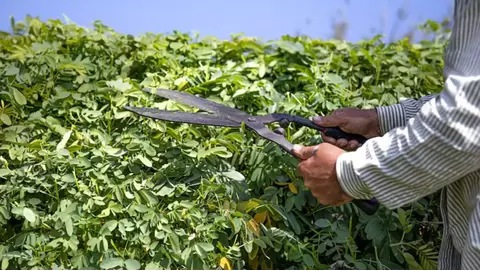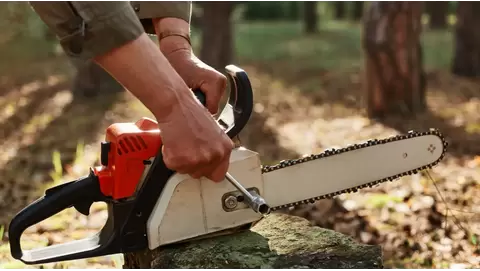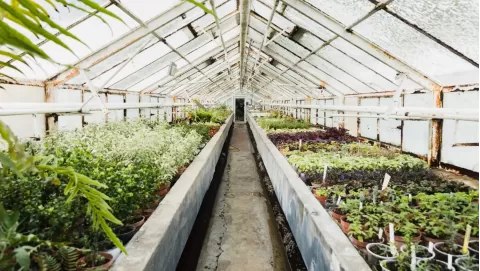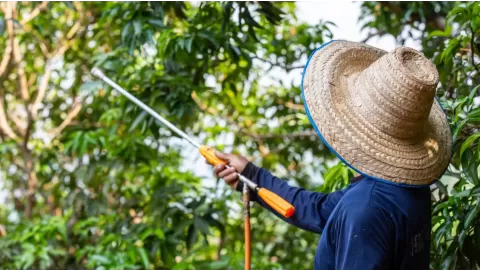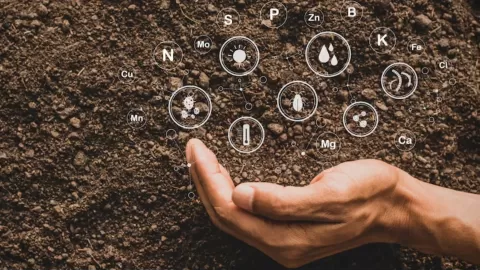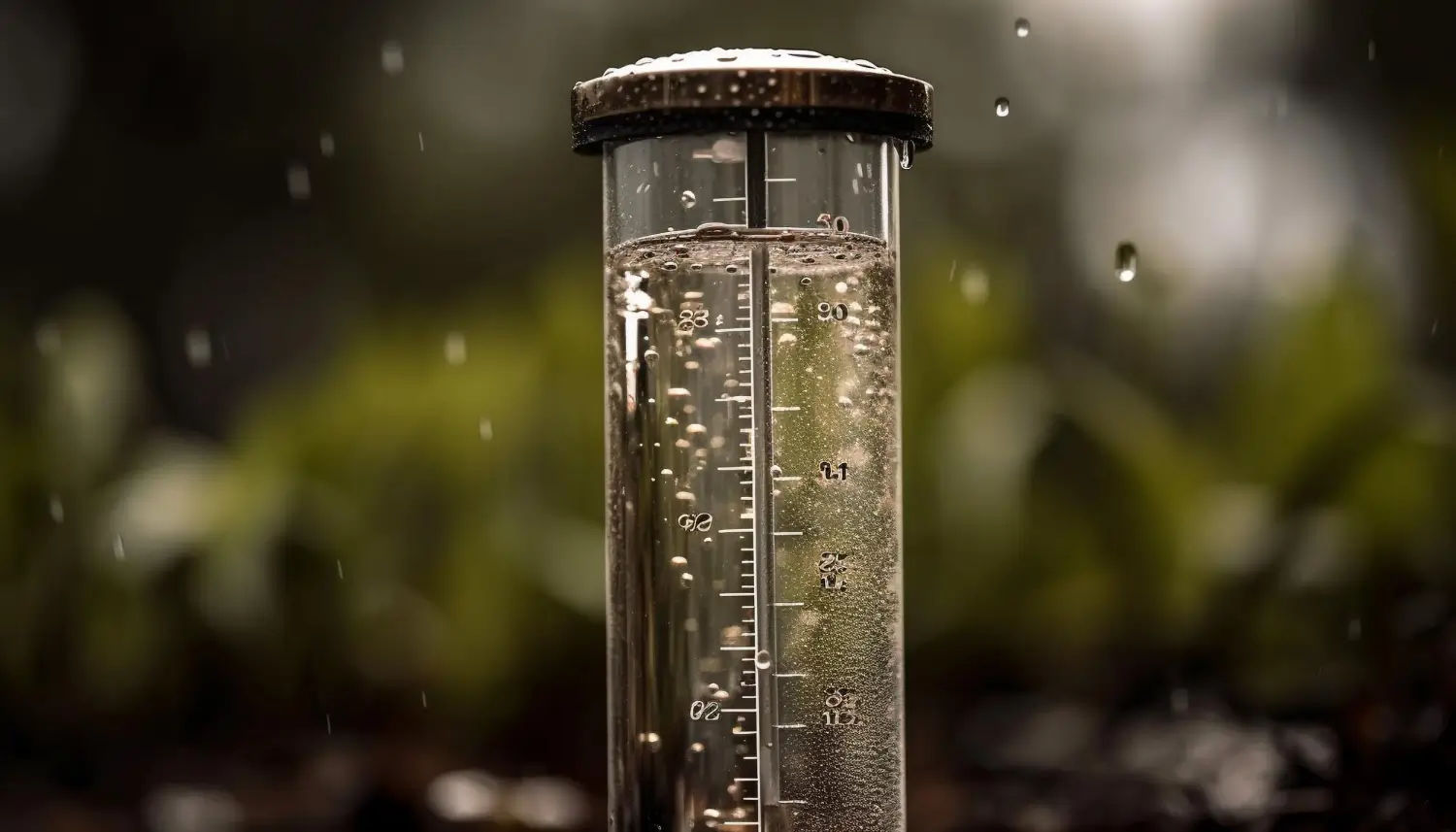
Best rain gauges to track your garden’s water needs
A flourishing garden depends on the proper amount of water, light and nutrients. Water is an essential element for plant health and growth. But it can be challenging to water the garden properly, especially when rainfall is hit or miss. That’s why it’s so important to track the rain. Because they can measure how much rain has fallen, gardeners can adjust their watering schedule so that their plants get the amount of water they require without resulting in drought stress or overwatering.
There are many tools available today that can help tackle that problem, one of which is the rain gauge. Digital, wireless, and traditional rain gauges can all help in water management. The different kinds have features to support a variety of gardening types from basic ones to more technical situations. Growcycle provides various rain gauges to help professional growers and home gardeners measure rainfall accurately.
Rain Gauge and How it Works
A rain gauge is a basic instrument that measures the quantity of rainfall in a certain area within a specified time period. It collects rain and measures its volume, yielding useful information for gardeners, farmers and meteorologists. Used for tracking weather patterns, monitoring drought, and managing water resources, rain gauges are essential for researchers.
The basic principle of rain gauges is to collect the water and measure it. The water is then measured in a unit called millimeters (metric)/inches (imperial), as to how much water has been collected over a span of time.
- Collection: The rain gauges generally consist of a container or a funnel that collects rain. The funnel leads the water into the container, or measuring tube, that actually contains the water. Depending on the gauge type and material, some will be able to have a mesh or screen to block debris from getting inside the container and affecting measurements.
- Measurement: When the rainwater has been collected, it is measured in different ways based on the rain gauge station type. Many types of traditional rain gauges use an easy to read marked tube within the collection tube that indicates the amount of water that has collected. In fact, advanced rain gauges such as digital or wireless gauges will electronically measure any collected rainwater and display it in a screen or app.
- Conversion: The data about the rainfall is collected by the rain gauge, which is a cone or cylinder jar that can anticipate the amount of rainfall. This makes it easier to compare rainfall quantities and use them to estimate how much watering a garden or agricultural plot of land may require.
Importance of Accurate Rainfall Tracking for Gardens
Keeping track of the rainfall is important for a healthy garden.
Water is a crucial element for the growth of plants, but when it comes to monitoring the rain, the plants should not be overwatered or under-watered. Here are some specific reasons accurate rainfall tracking matters for your gardening:
Watering Optimization
Another key benefit of rainfall tracking is optimizing watering schedules. Overwatering and underwatering are two common problems that affect plant health. If you water too little, your plants will wilt and be stressed, but if you water too much, root rot and other problems will arise.
By tracking exactly how much rain has fallen, gardeners can tweak their watering schedules so plants get just the right amount of moisture. It can help reduce time and water usage, making gardening more efficient and eco-friendly.
Benefits of Garden Maintenance
Tracking rainfall isn’t only for watering. It also aids gardeners in timing other garden tasks better, like fertilizing or pesticide application, due to accurate rainfall data. For instance, gardeners might like to use fertilizers post-rain so that the nutrients permeate the ground, or they might wait until the sun has dried the ground enough to prevent runoff.
With an awareness of when it rained recently, gardeners can better plan for watering, fertilizing and more while keeping plants healthy and garden management time-efficient.
Economic and Environmental Impact
Measuring rainfall accurately can also save money ии help the environment. Overwatering is not only wasting water but also stressful and can increase the water bill. Conversely, under-watering may result in less resilient plants but require more frequent irrigation.
The tracking of rain can help them reduce their dependence on additional water sources for a more sustainable approach to gardening. It also prevents wastage while ensuring maximum absorption of essential nutrients in native crops cultivated in the region, which is critical in water-scarce areas or those plagued by unpredictable rain patterns.
Types of Rain Gauges
Selecting an appropriate rain gauge for any garden is vital, and it is one of many ways to help the garden thrive. There are 3 basic types of rain gauges:
1. Traditional Rain Gauges
Traditional rain gauges are the simplest and oldest type of rain gauge. They usually comprise a funnel that directs rainwater into a cylindrical collection receptacle or measuring tube. Water filled in the container is then usually read on the scale (marked in mm or inches).
These gauges have been around for centuries, some designs date back to ancient Greece, and still popular today because they're so simple.
2. Digital Rain Gauges
Digital rain gauges–the ones with electronic sensors that measure rainfall and provide a digital read-out of the amount collected. Most models come with either an LCD or LED display that displays the amount of precipitation in real time.
Some digital gauges also include data-storage capabilities so users can monitor rainfall over time. Some models come with extra sensors or software for more comprehensive weather details.
- Digital rain gauges have clear, easy-to-read displays that show rainfall readings in millimeters or inches.
- Most digital models automatically log rainfall over time, allows to go back to check or analyze patterns or trends.
3. Wireless Rain Gauges
Wireless rain gauges are meant to send rainfall data to a receiver like a smartphone, tablet or computer. This data is transmitted wirelessly via protocols such as Wi-Fi or Bluetooth, providing the user with timely information that needs not be accessed by going outside or reading the gauge manually.
- Wireless models transmit rainfall data in real time to an app or cloud-based system, so users can check on conditions remotely.
- Several wireless rain gauges feature apps for a phone or tablet that will allow to easily see and track rainfall data from anywhere.
- Some wireless models also can send alerts when specific rainfall levels are hit, great for gardeners or farmers alike.
Key Features to Consider When Choosing a Rain Gauge
It is essential to consider several different features when choosing a rain gauge to ensure that the device works correctly and is suited to the garden's requirements. Here are the essential features to consider when selecting the right rain gauge:
1. Accuracy and Reliability
The quality of a rain gauge’s sensors and calibration are paramount to its accuracy. Higher-quality sensors also deliver better rainfall data, allowing gardeners to make better decisions about watering and plant care.
Wind and debris can throw off the reading on rain gauges, especially traditional models. To mitigate against these effects, its best to choose a rain gauge with maintenance features, like protective covers or debris filtering systems. Also, thinking about the type of weather in the area can help choose a model.
2. Ease of Use and Installation
Rain Gauge have to be easy to operate and read. Digital and wireless models must have simple displays and intuitive interfaces, while traditional models need clear markings for easy measurements.
Ease of installation is another consideration. Some rain gauge are fixed to a single location and others can be used more portably. This is particularly useful for those who are using rain gauges for the first time.
3. Data Logging and Integration
Numerous contemporary rain gauges, especially digital and wireless models, will provide with data logging functionality. This enables users to monitor rainfall over time. Certain models are able to sync with mobile applications that allow to easily access the data from anywhere. Choose a model that makes it easy to export data if want to analyze or share rainfall trends.
For people with smart garden systems or smart home setups, a rain gauge that can be connected and integrated with other devices is an ideal option. Wireless models typically sync with irrigation systems, making it more convenient to automate watering appropriately based on real-time rainfall data.
4. Durability and Maintenance
If the rain gauge will be used outdoors throughout the year, it should be constructed from weather-resistant material. Durable materials such as stainless steel, UV-resistant plastic, or aluminum help withstand rain, wind, and extreme temperatures.
To be accurate, a rain gauge needs regular cleaning and maintenance. Choosing one that’s easy to clean and doesn’t need too much maintenance is key. Removable parts or wider openings also tend to make models easier to care for.
Top 3 Rain Gauges
Growcycle has a range of rain gauges to make the process easier, more accurate and even decorative. Here are 3 highly-rated rain gauges:
1. Headwind Magnifying Clear Rain Gauge
For a classic, simple, yet reliable rain gauge, try the Headwind Magnifying Clear Rain Gauge. Its 8.5-inch build, paired with easily visible increments on an amber background, provides quick and easy-to-read measurements. The tapered spear end makes it easier to set the gauge into the ground or a post.
- Large, magnified readings that are easy to read.
- Being tapered allows for greater mounting flexibility.
- Heavy-duty but weatherproof plastic.
- Great for various gardening applications.
2. Luster Leaf Rapitest Rain Gauge with Bracket
If looking for a more decorative and functional rain gauge, the Luster Leaf Rapitest Rain Gauge with Bracket is a great option. With a 2.5-inch diameter, this 7-inch gauge includes a mounting bracket for attaching fence or deck posts. It also has both inches and millimeters on the scale, to monitor the rain accurately as it falls, up to 5 inches.
- Decorative and functional design.
- Mounting bracket for easy setup.
- Measures up to 5 inches of rainfall.
- Dual scale (inches and millimeters).
3. Headwind EZ Read Rain Gauge Rainbow Assortment
For a colorful and different option, the Headwind EZ Read Rain Gauge Rainbow Assortment is a good pick for those who want multiple options. This set of 24 bright-colored rain gauges have yellow markings on a clear tube. Its unique funnel top design also keeps debris from clogging up the collector, leading to more accurate measurements.
- Includes 24 vibrant rain gauges.
- Scorching yellow highlights for visibility.
- Preventing debris clogging of funnel top design.
- One fun, colorful design for a more decorative approach.
Installation and Setup Tips
Correctly installing and setting up a rain gauge is important in order to provide accurate rainfall measurements and help maintain good performance over time.
Site Selection for Optimal Accuracy
To get accurate measurements the rain gauge needs to be located away from obstructions like trees, buildings, or anything of that nature. These barriers can deflect or block rainfall, resulting in inaccurate measurements.
An open space is needed, but it should not be an area of high wind exposure either. Wind can blow water away; this can interrupt the collection of rainfall, particularly in traditional rain gauges.
To prevent the rain gauge from tilting, the rain gauge needs to be on flat, level ground so that it does not tilt, which may make the measurements wrong.
Installing Traditional Rain Gauges
- Use the criteria defined to select a clear, optimal location.
- For stake-mounted models, firmly place the stake into the ground. Models that are designed to be wall-mounted will need screws or brackets to hold them in place.
- Make sure the rain gauge is securely setup and upright to avoid falling over or wind damage.
Installing Digital and Wireless Rain Gauges
- For the most accurate reading, pick a place on level ground and open.
- For digital and wireless models, the sensor should be situated in an unobstructed area, following the manufacturer’s tracking instructions for height and placement.
- Place the display unit away from the server, so that it has a remote view. Make sure the range of wireless is wide enough to keep a successful connecting with the sensor.
- Depending on the model, install batteries or plug in the rain gauge. For the solar-powered models, put the unit somewhere it can receive enough sunlight.
- Once installed, test the gauge by looking at the readings after a light rain or adding water by hand to verify the system is functioning as it should.
Calibration and Testing
Most traditional gauges are not calibrated, though it is critical to make sure the gauge is properly placed and clean. If the readings appear to be inaccurate refer to a nearby, reputable gauge or local weather data for comparative reference.
Setting up the digital models may need calibration. This often requires calibrating the zero point or placing the right point to fit local weather. Each product has its own calibration requirements which can be found in their respective manual.
Wireless rain gauges are usually pre-calibrated, but should verify their readings after installation, comparing them with the local rainfall data or a manual gauge, to make sure that they are accurate.
FAQs
What rain gauge is the most accurate?
Usually, the digital rain gauges are the most accurate because they measure very precisely how much rainwater has fallen, and allow the user to save the data for later check. Standardized data logging is easy and reliable with digital gauges.
How do I choose a rain gauge?
When selecting a rain gauge, look for quality, ease of installation, durability, and the type of data required. There is need for data on the wireless and digital type instruments, while the simple models are cost effective and easy to use.
How to measure rainfall at home?
To measure rainfall at home, install one in an open space within the yard, away from obstruction by trees or buildings. After rain, note how much water has been collected in the gauge, and the measurement will indicate rainfall amounts.
The Bottom Line
Selecting a suitable rain gauge is a vital aspect for any gardener that wants to maintain the correct watering to help keep plants healthy. Rainfall measurements provide means by which gardeners can alter their watering schedule accordingly to avoid pesticide overwatering or underwatering, giving plants the proper amount of moisture. With Growcycle’s quality products on hand, gardeners can easily track rainfall and maximize their garden care.
Disclaimer: This material is for informational purposes only and should not be relied on for legal, medical, financial, or any other form of professional advice.







